Installing a new toilet is a great way to update your bathroom without breaking the bank. Toilet installation is not as difficult as it may seem and can improve both the function and look of the room.
It's important to have all the necessary tools before starting, including a wrench, screwdriver, and plumber's putty. You'll also need to shut off water to avoid flooding during installation.
Many toilets come with detailed instructions that will help you through the process step by step. Make sure you take proper measurements for your toilet before buying so it will fit correctly in your space.
Be sure to check local codes for any specific requirements for toilet installation in order to make sure your project meets safety standards. With a few simple materials and some guidance, you can easily install a new toilet in your home and transform your bathroom on a budget!.
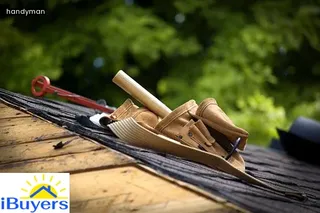
Hardwood floors are a timeless and elegant look that can really transform a home. Refinishing them yourself is an easy and affordable way to give your house a fresh, new look without breaking the bank.
The process is simple - start by giving the floor a good cleaning, then use sandpaper to get rid of any imperfections. Once you have removed any scratches or stains, you can apply stain or paint depending on the desired look.
Once this has been done, you will need to apply several coats of polyurethane or varnish to seal in the color and protect it from wear and tear over time. With some patience and attention to detail, refinishing your hardwood floors can be an easy DIY project that will make a big difference in your home's aesthetic.
Lawn care is a crucial component of any home improvement project, especially if you want to transform your house on a budget. Patchy grass can be a difficult problem to tackle but with some simple do-it-yourself strategies, you can make your lawn look lush and green in record time.
Start by determining the cause of the patchiness - usually it's either too much sunlight or not enough water. If it's due to too much direct sun exposure, consider planting shade-loving grass varieties such as fescue and rye.
Regular mowing is essential for keeping the grass healthy and preventing weeds from taking over, but avoid cutting too short or scalping the soil. Over-fertilizing can also lead to patchiness so use natural fertilizers like compost or manure instead of chemical products.
Regularly aerating your lawn with a garden fork will ensure that air and moisture reach deep into the soil as well as prevent compaction. Finally, overseed with fresh seeds each season to repair existing patches and help give your lawn an even coverage.
With these tips, you'll have no trouble giving your outdoor space a vibrant makeover on a budget!.

Diy home improvement can seem daunting when trying to stay within a budget, but it doesn't have to be. Troubleshooting garbage disposal issues is an easy fix that won't break the bank.
First, check for any clogs in the sink drain or pipe leading from the sink. If there's a clog, remove it and run the disposal again.
If not, try resetting the unit with a reset button or by turning off the power switch and then turning it back on again. If these don't work, check your circuit breaker to make sure the unit has power.
If all else fails, consult a professional plumber who can assess the situation and recommend repairs. With some simple fixes you'll be able to transform your house without breaking your budget!.
Dealing with bad odors in the dishwasher can be an unpleasant experience. Luckily, there are some simple and inexpensive DIY solutions to eliminate them quickly.
Start by running a cycle with vinegar – it's a great natural disinfectant that will help kill bacteria and break down food particles left behind. Then, use baking soda to help absorb odors and leave your dishwasher smelling fresh.
Finally, you can sprinkle lemon juice into the bottom of the dishwasher before each cycle for added freshness. Not only are these solutions cost-effective, they're also easy to do in just a few minutes and will save you money on expensive cleaners or deodorizers.
With these simple home improvement tips, you can keep your dishwasher smelling clean and fresh on a budget!.
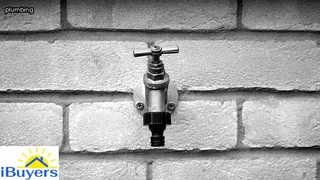
If you're looking for a simple and cost-effective way to upgrade your home, look no further than fixing those annoying noisy cabinet doors. With just a few materials and some DIY know-how, you can transform the sound of your kitchen or bathroom cabinets in no time.
Begin by inspecting the hinges and handles of the doors; if they are loose, tighten them with a screwdriver. If the problem persists after tightening, try replacing the existing screws with longer ones that will grip more securely into the door frame.
You may also want to add rubber washers to reduce vibration and cushion noise. Finally, you can use clear adhesive bumpers on the inside corners of each door to prevent them from banging together when closed.
With these quick and affordable tips, you'll be able to silence those cabinet doors once and for all!.
Replacing headlights in your car is an essential part of DIY home improvement on a budget. Finding the right parts and tools can seem daunting, but with a bit of research, it doesn't have to be.
Gather information online or from local auto stores to learn more about the type of headlight you need for your car. Consider asking friends and family if they have any advice on where to find inexpensive headlights and how best to install them.
Read up on installation techniques, such as reusing old connectors and using electrical tape on exposed wires. If possible, shop around for used headlight components that are in good condition to save money - just make sure they fit correctly before purchasing.
With the right preparation and knowledge, you can easily swap out old headlights for new ones and give your car a fresh look while staying within your home improvement budget.

Securing a loose showerhead is an easy home improvement project that doesn't require a lot of money or effort. The most important part of the job is to ensure that you have all the necessary materials, such as a wrench and plumber's tape, before starting.
The first step is to turn off the water supply to your shower by using the shutoff valve located behind your faucet. Once this has been done, you can remove the head of your shower by gently unscrewing it with your wrench.
Once removed, check if there are any cracks or damage to the pipe, and replace it if necessary. After this, use plumber's tape around the threads of your showerhead before screwing it back in place; this will help create a secure seal.
Finally, turn on your water supply and test out your newly secured showerhead! With these simple steps in mind, anyone can easily enjoy DIY home improvement on a budget and transform their house in no time.
If you have unsightly ceiling stains that are causing an eyesore in your home, there are several simple DIY improvements you can make on a budget to disguise them. For water damage or rust stains, one of the most cost-effective solutions is to cover them up with a coat of paint.
Depending on the size and extent of the stain, you may need to repair any holes or cracks before applying primer and paint. If you don't want to go through the hassle of using a brush and roller, consider using a spray paint system for a more even coverage.
You can also purchase ceiling tiles designed to hide stains, which may be a better option if there is extensive water damage or if you want to add texture to the room. Finally, consider hanging an art piece from the ceiling as another way to draw attention away from any blemishes!.
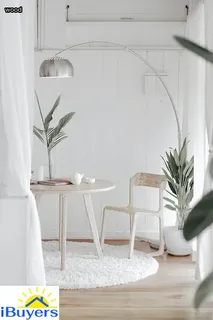
Repairing roof vents can be an intimidating home improvement project, but it doesn’t have to break the bank. With a few simple steps and the right supplies, you can transform your house and make it more energy efficient.
Start by inspecting the existing vents for any signs of damage, such as holes or cracks in the flashing. If necessary, replace any broken flashing with new material that is compatible with your roof type.
Make sure to apply sealant around the edges of the vent to ensure a tight fit. When installing new vents, use a level to ensure they are properly aligned and secure them with screws so they remain in place.
Finally, add caulk around the edges of each vent to ensure there is no air leakage and keep critters out. With these easy steps, you can repair roof vents on a budget and keep your home looking great!.
Removing dents from wood surfaces can seem like an intimidating task, especially when you don’t want to spend a lot of money on expensive tools or materials. But there are actually some simple DIY home improvement solutions that can help you transform your house without breaking the bank! Start by filling the dent with a putty knife and wood filler, then sand the area until it is smooth.
You may need to use a damp cloth or sponge to remove any excess dust. Once you have filled and sanded the area, use a wood stain that matches the existing color of your wooden surface.
Be sure to apply two coats of stain and sealer for lasting protection. Finally, if you want to give your wood surface an extra shine, use furniture wax or polishing compound to buff out any remaining imperfections in the wood.
With these easy DIY home improvement tips on a budget, you can restore dented wood surfaces in no time!.
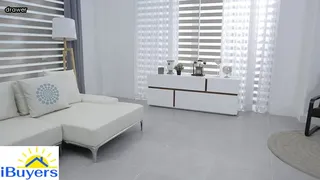
Weatherproofing windows and doors is an essential DIY home improvement project that can help transform your house with simple fixes. Sealing cracks and gaps, replacing worn-out weatherstripping, and applying caulk to areas of your windows and doors can all help to protect against drafts.
Weatherproofing also helps to prevent moisture from entering the home, while reducing energy costs. Installing storm windows or adding a second layer of window protection is another great way to improve insulation in areas that are particularly prone to cold temperatures.
In addition, checking for any rotting wood around door frames or window sills should be done regularly as this could lead to water damage if not properly taken care of. Taking the time to inspect these areas thoroughly can save you money in the long run by preventing further damage from occurring.
One of the most common DIY home improvement tasks homeowners face is unclogging kitchen drains. Fortunately, this job doesn't have to be expensive and can be done in a few simple steps.
To begin, locate your sink's trap underneath the drain and unscrew it with a wrench. Remove all debris from the trap with gloves on and then rinse it off with hot water.
Next, use either a plumbing snake or a plunger to remove any blockages in the pipes. If you don't have these tools, you can also pour boiling water down the drain as an alternative method of unclogging.
Finally, once you've removed all blockages, reattach the sink's trap and ensure that it is secured correctly with a wrench before running more hot water down the drain to test it out. With these simple fixes, you can save money while transforming your house into something new!.

Stainless steel appliances are a great way to add a modern, chic look to any kitchen. Not only do these appliances have an eye-catching shine, but they’re also very durable and long-lasting.
With the right maintenance and cleaning routine, you can keep your stainless steel appliances looking like new for years to come. To make sure your stainless steel appliances stay in top condition, regularly wipe them down with a soft cloth or sponge.
For tougher stains, use a mild detergent or non-abrasive cleaner and avoid using abrasive cleaners or scrubbing too hard which can cause scratches. To help maintain their shine, use a specialized stainless steel polish that will keep them looking their best.
If you’re on a budget but still want to transform your home with shiny stainless steel appliances, there are plenty of DIY options available that won’t break the bank.
If you don't want to pay for a professional car paint job, you can touch up your own chipped paintwork with some simple DIY home improvement. Start by cleaning the area with soap and water and then drying it thoroughly.
Before you begin painting, make sure the area is free of any dirt or debris. Using an aerosol paint, apply the paint in thin layers until the chip is filled and the color matches your car's current paintwork.
Note that if you're matching a specific color, you may need to purchase an exact shade from a car supply store. After applying a few coats of paint, let it dry and then apply clearcoat lacquer to seal it in and give your car an extra layer of protection against further chips and scratches.
With these easy steps and some patience, you can touch up your vehicle's chipped paintwork without having to spend a lot of money on professional services.
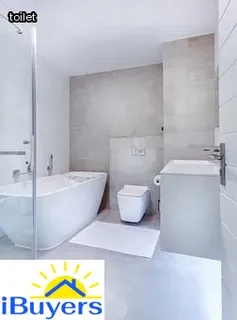
Structural damage can be a daunting issue when it comes to DIY home improvement on a budget. It's important to identify the source of the damage and plan carefully for repairs.
First, you should inspect for any signs of broken or loose components such as rotten wood, cracked foundation, sagging roof or wobbly floorboards. If needed, you may need to enlist professional help to ensure structural integrity is restored.
Next, consider ways to repair the damaged area without replacing it entirely - filling gaps with concrete caulk or using epoxy fillers to fill in cracks are both cost-effective solutions that can help restore structural stability. In addition, if possible, reinforce weakened areas with additional support beams and joists to ensure a long-term fix.
Finally, make sure your repair work is up to code by checking building regulations in your area - this will help keep your house safe and secure while saving you money in the process!.
If your floors are uneven and you're looking for a home improvement project that won't break the bank, consider leveling them yourself. This can be done by renting a flooring jack, which is a tool used to level out floors.
When using this tool, it's important to make sure it's properly secured before operating it. If you're looking for an even simpler solution, try shimming with thin spacers - this can easily be done with just some scrap wood or hardboard.
It's recommended to use wooden wedges or shims if you have an uneven subfloor as well. Depending on the size of the space you need to cover and the amount of time and effort you want to put in, either method will help you achieve an even floor surface without costing too much.
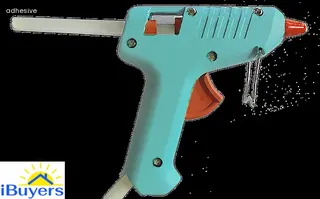
Patching cracks in walls is an easy yet impactful way to improve the appearance of your home without breaking the bank. Not only will this make your walls look brand new, but it can also help to preserve the longevity of your house.
Additionally, patching cracks in walls can provide additional insulation and soundproofing that, over time, will save you money on energy bills. To complete this diy home improvement project, all you need is a few basic tools such as a hammer and chisel, putty knife, sandpaper, and spackle.
Enhancing home security systems is another cost-effective way to ensure peace of mind while at home or away. From motion sensors to doorbell cameras, there are a variety of options available to fit your budget and lifestyle.
Moreover, replacing aging electrical wiring is essential for safety reasons as well as preventing unnecessary fire hazards due to worn out wires. Taking on this task yourself requires some more advanced skills but with the right guidance and instruction manual it can be done with relative ease.
When it comes to DIY home improvement on a budget, some of the most expensive fixes for a house include replacing windows, repairing or replacing the roofing and siding, fixing major plumbing issues, and installing new electrical wiring. Replacing windows is often one of the priciest items as it can be labor-intensive and require specialized tools.
Roof repairs or replacements can also be costly due to materials like shingles and other associated costs such as removing and disposing of existing materials. Major plumbing problems may cost thousands of dollars to fix depending on the complexity of the issue.
Installing new electrical wiring can also be quite pricey due to additional labor costs and any permits that may be required.
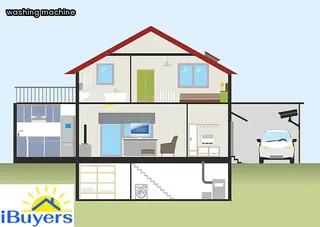
Fixing up a house can be a great investment for those looking to make their home look and feel like new. Not only can it increase your home's value, but it can also save you money in the long run.
DIY home improvement projects are a great way to make simple changes to your home without breaking the bank. From repainting walls to replacing fixtures, small updates can have a big impact on the look and feel of your home.
With careful planning and budgeting, DIY projects can provide an affordable solution to making your house look like new again. Investing in fixing up your house is definitely worth it, as it will not only increase its value but will also help improve your quality of life at home.
House repairs tend to be much easier than people think, and there are plenty of DIY home improvement projects that can be done on a budget. Some of the most common house repairs include patching drywall, replacing light fixtures, fixing leaky faucets, painting walls, and repairing broken windows.
Drywall patching is a simple job that only requires a few simple tools and some materials from your local hardware store. Replacing light fixtures is also relatively easy and can help transform the look and feel of your home.
Fixing leaky faucets requires basic tools such as wrenches and screwdrivers, but it is important to make sure you turn off the water before beginning this repair. Painting walls is an effective way to spruce up any room in your house and can be completed with items such as paint rollers or spray cans purchased at any home improvement store.
Repairing broken windows may require special tools depending on the type of window you have; however, this repair is usually not too complicated or time consuming. With these simple fixes, you can save yourself time and money while transforming your house into something you love!.
If you're looking to make improvements to your home without breaking the bank, DIY home improvement on a budget is a great place to start. Simple fixes can help transform your house into something truly special and personal.
Whether it's paint, furniture, or accessories, there are plenty of ways to spruce up your space without spending a fortune. To get started with DIY home improvement on a budget, first identify what areas need the most attention.
Take time to assess problems and consider possible solutions that fit within your budget. Once you have an idea of what needs work and what changes you'd like to make, begin researching materials and tools required for the project.
As you research each task, determine if there are any items that can be reused or repurposed instead of buying new ones. Additionally, check out thrift stores or local hardware stores for discounts on materials.
Finally, enlist friends or family members who may be willing to lend a hand in order to reduce labor costs. With these tips in mind, DIY home improvement on a budget is sure to help transform your house into something special!.
A: You can use drain rods to unclog the water pipe, then insert a drawer box with drawer slides to replace the old pipe.
A: To unclog the toilet bowl, start by using a plunger to create suction and push the clog through. If this does not work, use a closet auger or snake to unclog the drain.

A: To fix a broken window, you will need to remove the existing frame and glazing, measure for a replacement, order the new glass and frame, and install it in the opening.
A: To fix your house with a caulking gun and glue, first load the caulk into the caulking gun. Apply the caulk along the edges or seams of the desired area that needs fixing. Next, use the glue to secure any loose pieces or fill in any gaps. Use a putty knife to smooth out the caulk and glue for a finished look.
A: Depending on the nature of the issue, you could try to fix it yourself using tutorials or videos online, or you may need to call a professional contractor.

A: You can use a grout saw to remove the old grout around the hinge pins, then fill the gap with new grout to secure the hinge pins in place.
A: To secure a piece of fabric to the wall using plastic and a nail, first measure the fabric and cut it to the desired size. Then, punch a hole in the plastic slightly larger than the size of your nail, and put the nail through it. Finally, use a hammer to firmly press the nail into the wall, making sure that both pieces of fabric are tightly secured.
A: To fix a hole in your house wall, first clean the area around the hole with soapy water. Then use spackle and a putty knife to fill the hole with spackling compound, smoothing it out as you go. Let the spackle dry completely, then sand down the area until it is even with the wall surface. Finally, apply a coat of paint to match the existing color of your walls.
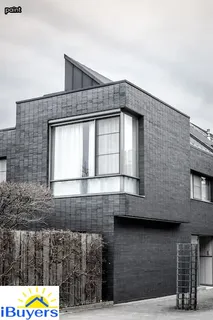
A: To fix kitchen appliances using ladders and lubricant, first safely climb the ladder and locate any components that need lubrication. Apply an appropriate lubricant to the components using a clean cloth or brush, ensuring all interior surfaces are covered. Repeat this process until all necessary parts are lubricated, then test the appliance to ensure it is functioning properly.
A: To fix up your house, you should start by assessing the repairs that need to be made and create a plan for tackling the tasks. After that, you can set aside time and money to complete the necessary repairs or hire professionals if needed.
A: Check to make sure that the switches controlling the lamp are set to the "on" position, and replace any burned-out bulbs. If this doesn't solve the problem, try adding some plants near the lamp to improve its energy flow.
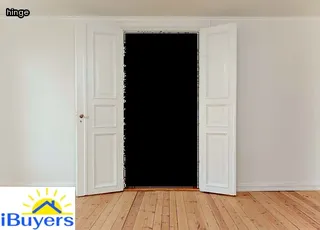
A: Depending on the type of repair needed, you may need to consult a professional. However, small repairs such as painting, patching holes in walls, and replacing fixtures can typically be done by the homeowner with the right tools and materials.
A: To fix a sash window, you will need to remove it from its frame and inspect it for damage. If it needs sanding, use medium-grit sandpaper to smooth out any rough edges. For the carpet, use a vacuum cleaner to remove dirt and debris before applying a carpet shampoo. Finally, assess the showers for cracks or broken tiles. If necessary, use waterproof sealant to fill in any gaps or holes before sanding down the surface with an appropriate grit of sandpaper.
A: Depending on the type of repair you need, you may want to hire a professional contractor or try to do it yourself. If you decide to attempt the repair yourself, make sure to research the necessary materials and steps needed for the fix.
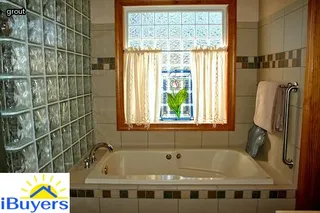
A: First, dry the area around the leak with the towel. Then, apply an epoxy glue to the area to seal it. Allow the glue to fully dry before testing for leaks.
A: Start by using a putty knife to scrape away any loose paint, then fill the hole with spackling or joint compound and let it dry. Sand it down until it's even with the wall, then paint over it to finish.
A: To fix your house, you'll want to start by using a pencil to sketch out the area that needs repair or patching. Once you have the shape of the area decided, then use some plaster to fill in the area. Once it is dry, use a pressure roller to flatten the surface and give it a smooth finish. Finally, use a painter's brush or roller to apply paint over the patched area.

A: Depending on the type of repair needed, you may be able to do it yourself or need to hire a professional. Consider the complexity and safety of the repair before deciding whether to tackle it yourself or call in an expert.
A: You can use foam insulation and electrical cables to repair your home's heating system. Start by removing any existing insulation, then fill in any gaps with the foam. Connect the electrical cables according to the manufacturer's instructions, and make sure they are securely fastened in place. Finally, test the system to ensure it is working properly.
A: There are several ways to fix up your house, such as painting, replacing flooring, switching out furniture and fixtures, and making small home improvements.

A: For ceiling fans, make sure it is properly installed and all connections are secure. For cabinetry, you may need to replace any hardware that is damaged or broken. Wood flooring can be fixed by sanding and refinishing the existing floor or installing new wood planks.
A: To fix up your house, start by making a list of necessary repairs and improvements. Take the time to research the best materials and methods to use for each project, and set a realistic budget. Then, prioritize the projects in order of importance, and begin tackling them one at a time.
A: To fix your thermostat, you should contact an HVAC technician. For the staircase stairs, you may need to hire a carpenter or handyman to repair any damage or replace broken boards. Gutters can be fixed by a professional gutter installer who will inspect and repair them as needed.

A: To fix your house, you could use a bleach solution to clean any mold or mildew on the walls, attach a bead of caulk along the edges of trim or fixtures to fill in small gaps and cracks, and use an angle grinder to cut into hard materials such as tile, stone or concrete.
A: Begin by carefully cutting away any loose or damaged pieces of wallpaper using the utility knife. Then use the closet auger to remove any remaining wallpaper fragments from the wall. Once the wall is clean and dry, apply wood glue to the back of the wallpaper patch and firmly press it into place on the damaged wall. Allow time for the glue to dry before adding additional coats as needed.
A: Use the levers to move heavy objects in the house and use the paintbrushes to apply fresh coats of paint.
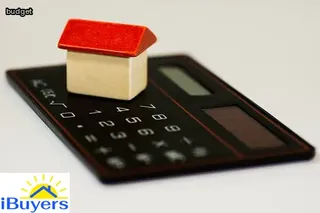
A: You can apply some lubricant, such as petroleum jelly or WD-40, to the latch. This will reduce the friction between the components, allowing the latch to open and close more easily.
A: Depending on the issue, you may need to hire a professional contractor or do the work yourself. Check for any underlying issues such as foundation problems, plumbing issues, and electrical problems before attempting any repairs.
A: To update the look of your house, start by adding a fresh coat of paint to the walls. Next, replace any outdated light fixtures with modern lighting. Add new curtains to the windows to bring in some color and texture. Finally, add some new furniture pieces to complete the look.
A: To remove wallpaper, first use a putty knife to loosen and break up the paper. Then wet the paper with a spray bottle and let it soak in for several minutes. After that, use a scraper or sponge to finish peeling off the remaining paper.